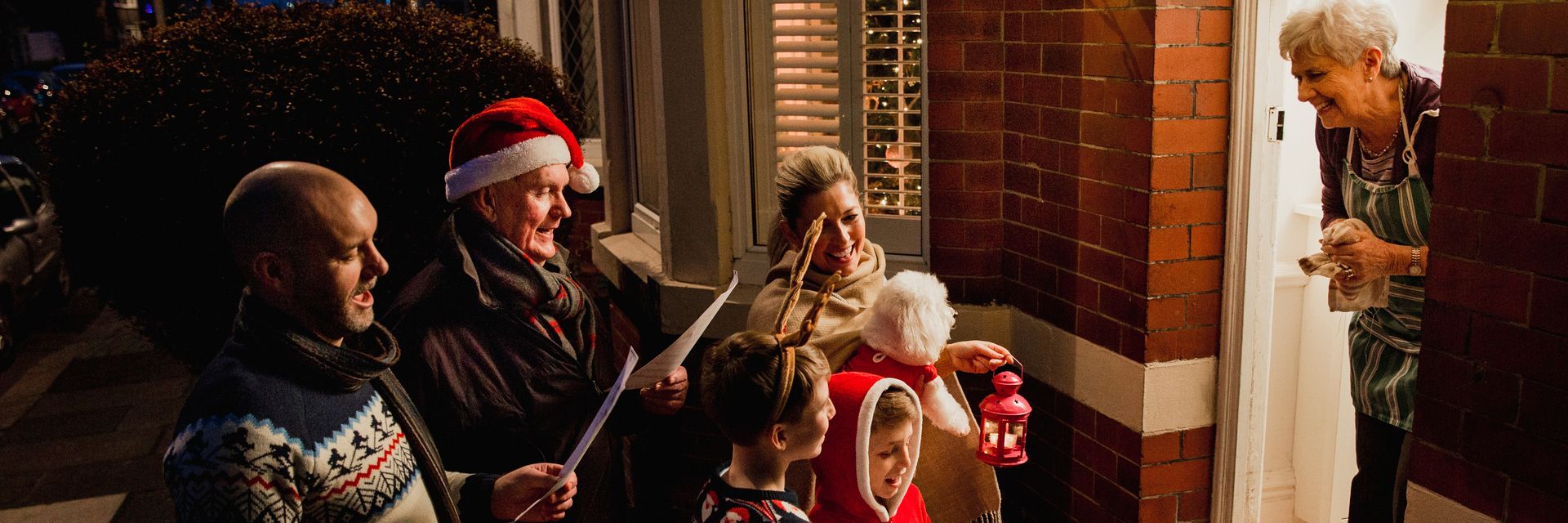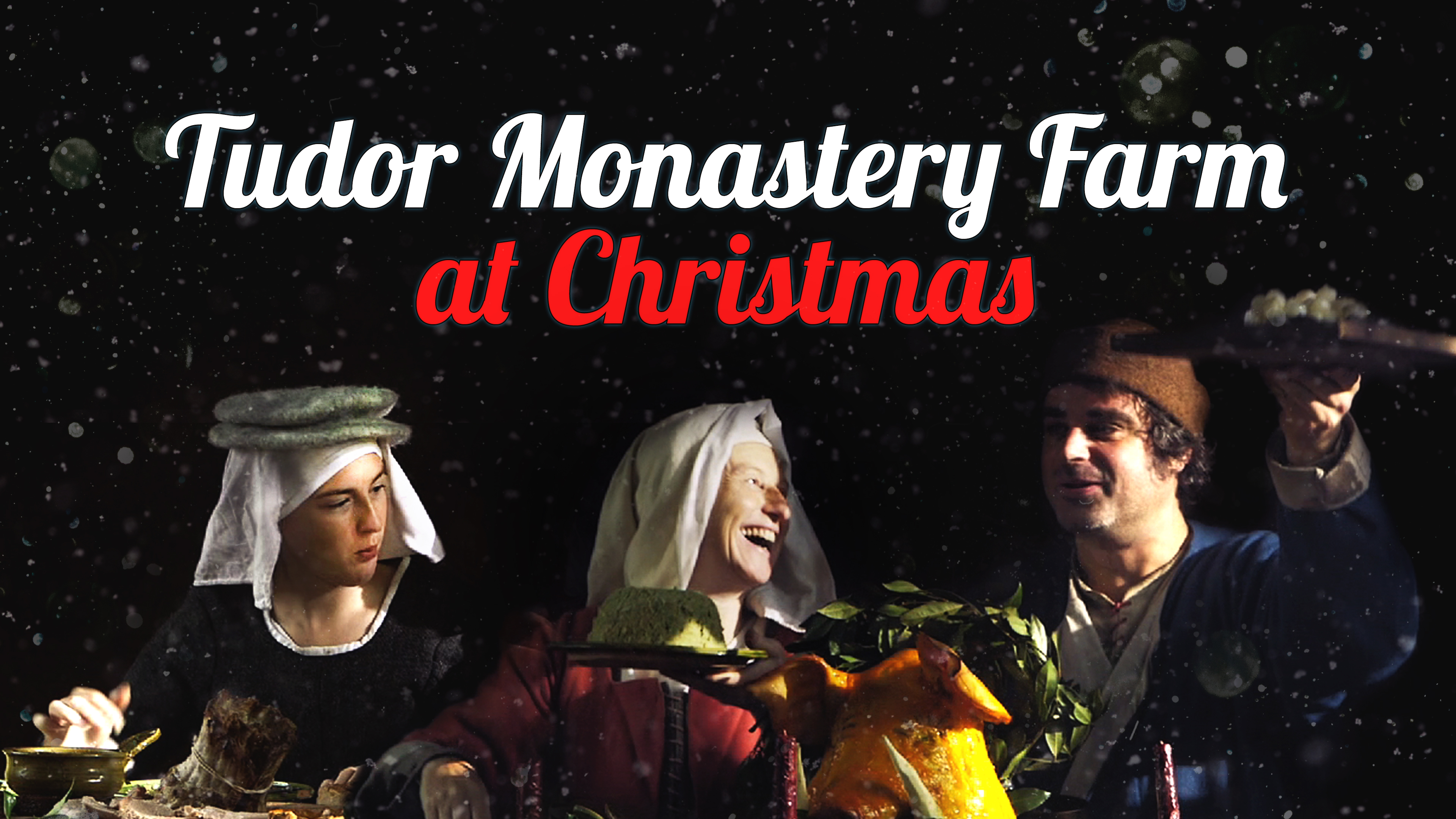Though their melodies and lyrics are familiar to all of us, the origins of these five Christmas carols are not well known.
◊
The yuletide tradition of bundling up on a cold night and traveling door-to-door to sing Christmas tunes continues centuries after the first Christmas carols rang through streets to bring holiday cheer to neighbors. Though many of the carols we cheerily sing today are only decades old, the earliest seasonal songs date back centuries.
Pagan dance songs meant to mark the start of each season were the first festive tunes. Later, around the 12th–13th centuries, religious hymns centered on the stories of Christ or the Virgin Mary became popular. However, the particular tradition of gathering in groups and traveling from home to home to sing carols began in the Middle Ages with an Anglo-Saxon tradition called wassailing.
Wassailing (or the “blessing of the fruit”) originally took place on the Twelfth Night. It involved groups of peasants approaching the doors of wealthy lords, who, in the spirit of the season, greeted their visitors with a hearty “Was hael” (meaning “be well” or “be in good health”). The peasants would respond, “Drink hael” (or “Drink well”). The lord would then serve libations from a bowl of warmed ale, cider, or wine that was passed among the merrymakers.
To learn more about wassailing and English traditions centered around music, food, and drink, check out Magellan TV’s episode Tudor Monastery Farm at Christmas.
This wassailing tradition continued for centuries. The customs of visiting and singing merged in 19th century Victorian England as Christmas became more commercial and popularly celebrated, and books of songs were published. They have evolved into what we know today as Christmas caroling – the heart of both traditions being to spread joy and cheer.
Amusingly enough, some vestiges of the wassailing tradition can be found in carols we sing today. For instance, in the popular carol “We Wish You a Merry Christmas,” you might be surprised to notice the wassailers demanding, ‘Now give us some figgy pudding,’ followed by a slightly threatening, ‘And we won't go until we’ve got some.’
Now, let’s look at the noteworthy origins of some of the best-known Christmas carols.
Silent Night (Stille Nacht Heilige Nacht)
Known for its peaceful and contemplative lyrics, “Silent Night” is one of the most beloved Christmas carols worldwide. The song originated in Austria, where its music was composed by Franz Xaver Gruber, and its lyrics were written by Joseph Mohr. The story behind the song dates back to 1818 in the small town of Oberndorf Bei Salzburg. The local church’s organ was not working, and the priest, Mohr, asked the church’s organist and school teacher, Gruber, to craft a new Christmas carol that could be sung without the accompaniment. The two men performed “Silent Night” at the Christmas Eve service on the day it was composed much to the delight of the church goers.
Hark the Herald Angels Sing
Though one version of the song is sung most today, “Hark the Herald Angels Sing” evolved through several iterations. The first version of the song was written in 1739 by the Methodist preacher Charles Wesley as a “hymn for Christmas Day.” Later in the 18th century, a preacher and friend of Wesley, George Whitefield, reworked the lyrics into the ones we know best. The song was transformed again in 1855 when the musician William Hayman Cummings married the lyrics crafted by Wesley to an already existing melody of the composer Felix Mendelssohn. Though Cummings was the individual who fused the work of three men, his name has never been published with the song.
The Little Drummer Boy
This catchy song tells the story of a poor young boy who has no gift to give to baby Jesus, so he asks to play his drums for him, the only gift he can give. The song’s origins are in a traditional Czech carol, called “Carol of the Drum” due to the repetition of “pa rum pum pum pum,” meant to imitate the beat of a drum. The English lyrics are believed to have been written in 1941 by Katherine K. Davis. Since the 1940s, the song has risen in popularity thanks to being covered by many artists over the years, such as The Trapp Family Singers as well as in a duet by David Bowie and Bing Crosby.
Deck the Halls
The carol we know today can be traced back to the 16th century and was a favorite song in Welsh tradition. It was originally titled “Nos Galan” (or “New Year’s Eve”) and, before more festive lyrics were added in the 19th century, its lines were relatively bawdy. In the translated English version, the lyrics might make some blush: “Oh! how soft my fair one’s bosom, fal lal lal lal lal lal lal lal la / Words of love, and mutual kisses, fal lal lal lal lal lal lal lal la.” These saucy images were far too scandalous for the proper Victorians, so the song was rewritten by Scottish musician Thomas Oliphant, in 1862. It has survived as the yuletide carol we sing today.
12 Days of Christmas
In Christian theology the 12 days of Christmas refers to the time between the birth of Christ and the gifts of the Magi, or the three wise men. Though the lyrics of this classic English Christmas carol are easily remembered, as each day represents a different gift, its history is not. The song is believed by some to have French origins, but the earliest versions of the song are found in a children’s book, Mirth With-Out Mischief, published in 1780. Though its origins remain somewhat obscure, it has endured each holiday season for decades.
Christmas carols are a part of a global language and have endured for a reason: They foster a sense of community, spreading a festive spirit and creating a shared sense of joy during the yuletide season. What is even more notable is how these songs seem to survive cultural and societal change as well as religious boundaries. Whether singing Christmas carols or partaking in the wassailing tradition, the essence of the season lies in the sharing of mirth, good tidings, and joy that resonates until the next Christmas season.
Ω
Marielle Genevesi is a contributing writer for Magellan TV. She is a high school English teacher in Queens, New York. She describes herself as creative and a problem-solver, and works to build her students into strong critical thinkers. Outside of academia, she is passionate about enjoying the outdoors and reading as many books as possible. She lives in Long Island, New York, with her husband and daughter.
Title Image credit: Adobe Stock


